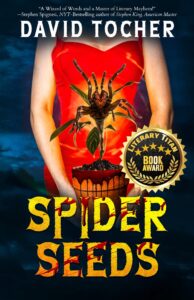Gothic Horror, Bram Stoker, Dracula, and the Roots of Modern Horror
Modern horror comes from the Gothic of the eighteenth century. It grew out of the Romantic period of English Literature, whose authors were focussed on how to write about the sublime, the beautiful, and the picturesque, as well as the strong feelings these aesthetics awaken in us. The sublime is how we feel when we see something huge or powerful in nature. Like a stormy sea or a mountain. We realize how small we are, and feel frightened, yet we feel a sense of pleasure too. The beautiful, on the other hand, is the pleasure we feel when we see something like a sunset over a quiet field. And finally, the picturesque is nature shaped by man’s hands, like gardens or parks.
The Gothic takes these ideas and turns them around. Instead of awe, it shows fear. Dark forests, abandoned castles, crumbling churches, and old graveyards stir the imagination and awaken dread. Where Romanticism lifts the soul, the Gothic presses on it. It uses the sublime to show decay.
The first Gothic novel to be written was Horace Walpole’s The Castle of Otranto. The Gothic thrives where awe mixes with fear. At its core, this genre can be defined in one line: the old disturbing the young. Bram Stoker’s Dracula makes this plain—the ancient Count intrudes upon modern London, unsettling its people and exposing their fragility.
Edgar Allan Poe, H.P. Lovecraft, and the Gothic Vision
Both Edgar Allan Poe and H.P. Lovecraft carried forward the Romantic fascination with the sublime, the beautiful, and the picturesque: landscapes that inspire awe, grandeur sinking into decay, and emotions so intense they unsettle the soul. In this light, William Wordsworth’s concern with interiority and sensibility lingers in the Gothic, though darkened. By interiority I mean the inward life, the world of thought, memory, and reflection. By sensibility I mean a heightened responsiveness to feeling, an openness to be moved by nature. What began as reflection on imagination and emotion in response to beauty becomes, in the Gothic, a descent into terror.
The Gothic Today: Beetlejuice, Psycho, and Beyond
The Gothic still appears in modern culture. Films like Beetlejuice twist humour and the grotesque together, while Alfred Hitchcock’s Psycho shows the old (Norman Bates’ mother) troubling the young (Norman Bates, Marion Crane). These current examples show how the past pressing on the present remains a compelling theme.
Spider Seeds: A Modern Gothic Thriller?
In my award-winning novel Spider Seeds, I do my best to carry this Gothic tradition forward. Madison Perth, a successful romance author with a troubled past, brings an exotic plant home. At first dismissing the old folklore surrounding it. Soon, however, she finds herself trapped in her condo, face to face with an ancient arachnid threat that parallels the pain from her past. The setting is Victoria, BC, and its historic architecture deepens the sense of the past pressing into the present.
If you love tension, atmosphere, and the strange, prepare for the deadly harvest of Spider Seeds—AVAILABLE NOW.

